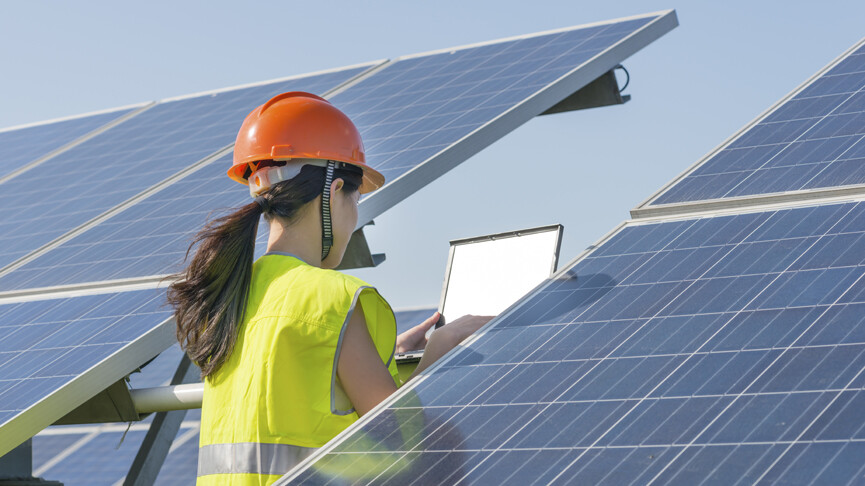In an era where sustainability and environmental consciousness are at the forefront of global discussions, solar energy emerges as a shining beacon of hope. The installation of solar panels has become an increasingly popular choice for both residential and commercial properties, offering a clean, renewable, and cost-effective source of electricity. In this comprehensive guide, we Solar Panel installation Essex delve into the intricate process of solar panel installation, exploring its benefits, considerations, and steps involved.
Understanding Solar Energy:
Before diving into the installation process, it’s essential to grasp the fundamentals of solar energy. Solar panels, also known as photovoltaic (PV) panels, are comprised of silicon cells that convert sunlight into electricity through the photovoltaic effect. This electricity can then be used to power homes, businesses, or even entire communities, reducing reliance on traditional fossil fuels and mitigating greenhouse gas emissions.
Benefits of Solar Panel Installation:
The decision to invest in solar panel installation offers a myriad of benefits, both environmental and economic. Here are some of the key advantages:
- Renewable Energy Source: Solar energy is infinitely renewable, relying on the sun’s abundant and inexhaustible power.
- Reduced Electricity Bills: By harnessing solar energy, property owners can significantly decrease their reliance on grid electricity, leading to substantial cost savings over time.
- Environmental Impact: Solar energy is clean and emits no greenhouse gases, helping to combat climate change and reduce air pollution.
- Energy Independence: Solar panel owners gain greater control over their energy production, reducing vulnerability to fluctuations in energy prices and supply.
- Financial Incentives: Many governments and utilities offer incentives, such as tax credits and rebates, to encourage solar panel installation, further enhancing the financial appeal.
Factors to Consider Before Installation:
While the benefits of solar panel installation are undeniable, several factors should be carefully considered before embarking on the journey:
- Sunlight Availability: Assess the amount of sunlight your property receives throughout the day, as it directly impacts the efficiency of solar panels.
- Roof Condition: Ensure that your roof is structurally sound and capable of supporting the weight of solar panels. Additionally, consider factors such as roof orientation and shading from nearby trees or buildings.
- Local Regulations: Familiarize yourself with local building codes, zoning ordinances, and homeowner association regulations governing solar panel installation.
- Budget and Financing: Determine your budget for solar panel installation and explore financing options such as solar loans, leases, or power purchase agreements (PPAs).
- Energy Consumption: Analyze your household or business’s energy consumption patterns to determine the appropriate size and configuration of your solar energy system.
The Solar Panel Installation Process:
Once you’ve conducted thorough research and planning, it’s time to embark on the installation journey. While the specifics may vary depending on factors such as location, property type, and system size, the following steps provide a general overview of the installation process:
- Site Assessment: A professional solar installer will conduct a comprehensive site assessment to evaluate factors such as roof condition, sunlight availability, and electrical infrastructure.
- Design and Permitting: Based on the site assessment, the installer will design a customized solar energy system tailored to your property’s specific needs. They will also handle the necessary permitting and regulatory approvals.
- Procurement of Equipment: The installer will procure the solar panels, inverters, mounting hardware, and other necessary equipment required for the installation.
- Installation: With the necessary permits secured, the installation team will proceed to mount the solar panels on your roof or ground-mounted racking system. They will also install the inverters, wiring, and other components of the solar energy system.
- Electrical Connection: Once the physical installation is complete, the electrician will connect the solar panels to your property’s electrical system, ensuring seamless integration with the grid or battery storage system.
- Inspection and Activation: After installation, a final inspection will be conducted to verify compliance with building codes and safety standards. Once approved, your solar energy system will be activated, and you can begin enjoying the benefits of clean, renewable energy.
Conclusion:
Solar panel installation represents a transformative investment in a sustainable future, offering numerous environmental, economic, and social benefits. By harnessing the power of the sun, individuals and businesses can reduce their carbon footprint, lower energy costs, and contribute to a cleaner, greener planet. With careful planning, expert installation, and ongoing maintenance, solar energy has the potential to revolutionize the way we power our world, one panel at a time.

